Established navigation on the example of BMW, a brief digression
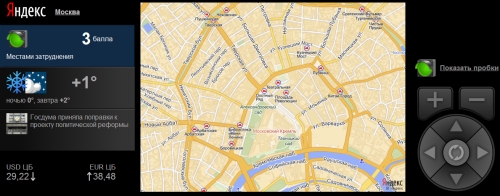
Good day, dear! Write this post led me to a discussion in one of the topics where people expressed their dissatisfaction with the standard navigation systems of many cars. As a result, since the automotive theme has received such a development in Habré, let's touch on Navi. In this topic, I will try in more detail to reveal the essence of the work of such systems. And if I'm working closely with BMW, I will take it as a basis.
A bit of history
From the 90s
To begin with, it seems to me, it is worth going back to the past to see where the navigation came from.
One of the first cars in the European market, equipped with a standard navigation system, was the BMW 7-Series (factory designation E38). The computer boasted a display with a 4: 3 aspect ratio, a cassette deck (the trend of that time) and a quite good color display quality by the standards of that time. It is worth noting already then that there is sufficiently deep integration with the other functions of the car, namely radio, the on-board computer, then an optional cd changer and TV tuner. Architecturally, all this household consisted of the on-board monitor itself (pictured below)
 ,
,radio module BM24 and direct navigation computer MK1. If you dwell on it in more detail, you can see a slot for the navigation CD, as well as a separate GPS module highlighted by the green arrow (the antenna module + gyroscope itself).
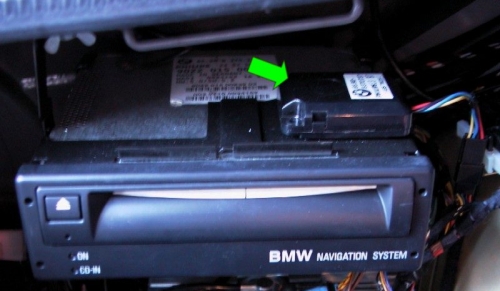
This foundation, laid in the mid-90s, was constant literally until the next century. Years passed, radio modules changed, the display diagonal increased to 6.5 inches with a 16: 9 format, CDs gave up their place to carriers with maps on DVD, GPS completely moved to the navigation computer, but the essence was the same. On the user side, everything was still controlled by a bunch of buttons, the right-hand encoder on the on-board monitor with branchy submenus.
The beginning of the two thousandth
The rest of the automakers followed the same path until at the end of 2001 a new BMW "seven" appeared ...
Differences on the part of iron? Yes, we had a radio that moved into the head unit, an optical data transmission bus, but for the user it was completely different: a large monitor located in the center of the front panel, which was there on an equal footing with the instrument cluster and only one located at hand , the controlling element, is the iDrive system controller. The principle of the menu was completely redone, it turned out a kind of "wind rose". Accordingly, in order to get to the thematic section (Navigation, Communication, Climate, etc.), it was necessary to move the controller in the appropriate direction. And there, by rotating and pressing, select and confirm the desired function. A seemingly good idea was completely killed by a terrible implementation: the menu items were confusing, the logic of movement was untested. The system was based on Windows CE. The hardware implementation, as far as I remember, was left for Alpine.
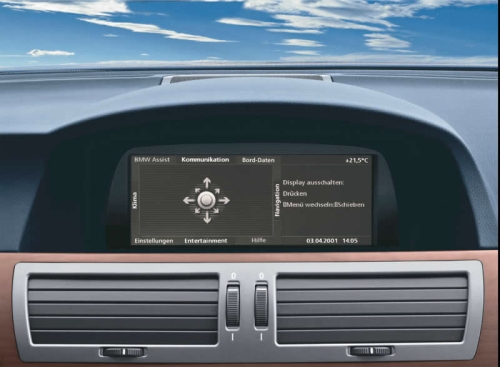
The next update of head units took place two years later, ridiculous by automotive standards. It introduced the change of the operating system to VxWorks, the integration of the navigation module in the head unit. The computer, called CCC (Car Communication Computer), was almost the first unit from BMW that contained a large number of real and virtual units (tuner, audio controller, antenna module, data exchange gateway, basic operating system and its application). It should be noted gradual integration, in which many systems are packaged in one "box". For the user, the essence of the changes has been reduced to simplifying the main menu to four points against the original eight; the appearance, finally, of the “Menu” button, with the help of which it was possible to return to the root of the system; as well as the absence of the need to climb into the trunk in order to insert a disk with a card (the drive is now located in the center console). The subjective comparison indicated a somewhat greater system stagnation, but somewhat greater usability. By the way, support for such a popular format, like mp3, came only in 2005. Subsequent improvements added pixels to the monitor and bookmarks, to which the driver could hang the menus or functions he needed.
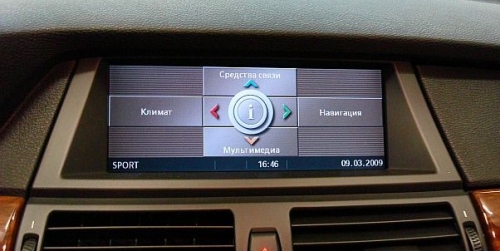
')
The present
And finally, in September 2008, a new “seven” and a new Navi aka CIC (Car Infortainment Computer) manufactured by Harman Becker. Compared to what it was before, this is a real “wow”! Display with HD-resolution of 1280x480, QNX-based operating system hosted on a 80 GB hard disk. The main thing is a qualitatively different navigation system with 3d rendering, the ability to record your music on a hard disk (or rather, a dedicated 12-gigabyte sector) and play DVD-video. The controller has got six additional shortcut keys, which, coupled with a complete menu rework and a faster processor, added speed to the system. Also, the automaker made another step in the fight against piracy. A couple of paragraphs above one could see that the navigation maps were distributed on a CD / DVD. Naturally, even 5-7 years ago, making a copy was not difficult. Solution from BMW? Since the navigation data moved to the built-in storage device, they protected it with the so-called FSC (Freischalt Code). Roughly speaking, this is the so-called key that protects the card that the customer wants to buy. Now the disks are just disks, and the manufacturer sells them at the most ordinary price, instead earning 200 euros for a set of numbers and letters that the customer will have to enter to update the card.
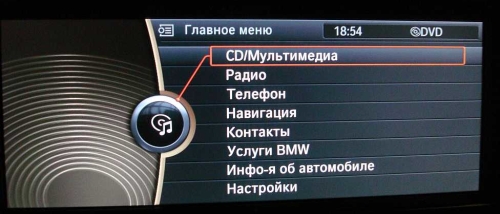
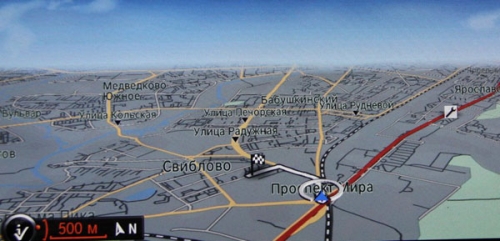
Speaking of the next paradoxes: the hard drive in this block is a notebook form factor 2.5 "with IDE interface. What is the reason for this is a secret for me. Also, most of the brand’s customers are interested in why they cannot listen to music from external media , but only to save on the HDD, why not watch videos, etc. The answer in this case is simple: most of the features that are missing in the functionality of the built-in unit are provided as options. And no manufacturer will let you listen to music from the iPod in the “base” if it can be sold as a separate item tion for some money.
Still?
What's next? Further integration, phone modules built into the head unit, external usb, as well as tighter integration with phones and smartphones (Internet access, local Google search, BMW Apps, etc.). I hope I will have the opportunity to tell you about it.
Source: https://habr.com/ru/post/140514/
All Articles